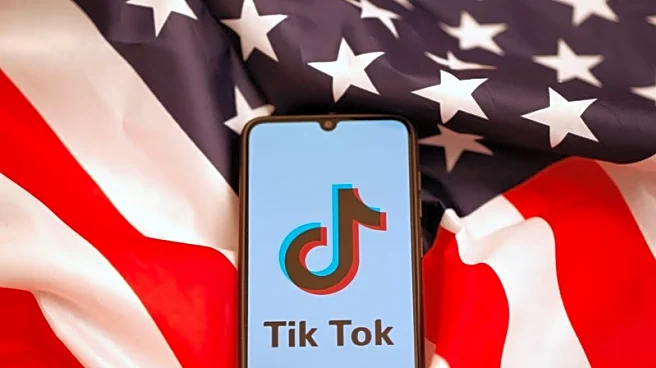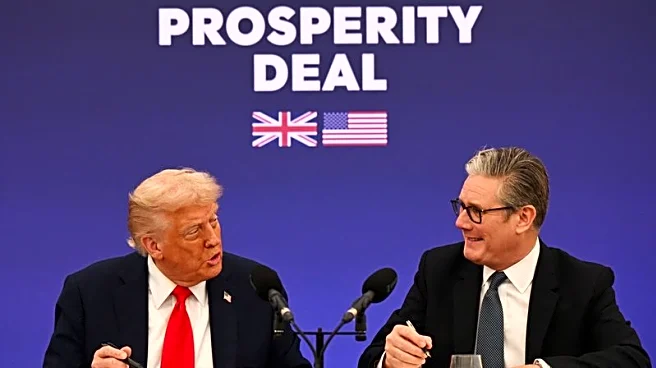What is the story about?
What's Happening?
The South Korean foreign ministry is currently assessing the implications of recent changes to the U.S. H-1B visa program, which could significantly affect South Korean enterprises and professionals seeking employment in the United States. The Trump administration has proposed a new policy requiring companies to pay an annual fee of $100,000 for each H-1B worker visa. This proposal has raised concerns among major technology firms, prompting them to advise their employees holding these visas to either remain in the U.S. or make quick arrangements to return if they are abroad. The policy change is seen as a potential barrier to the mobility of skilled professionals, which could impact the operations of South Korean companies with interests in the U.S.
Why It's Important?
The proposed increase in H-1B visa fees could have significant repercussions for the technology sector, which heavily relies on skilled foreign professionals. For South Korean companies, this change may lead to increased operational costs and challenges in maintaining a competitive workforce in the U.S. market. The policy could deter South Korean professionals from seeking opportunities in the U.S., potentially affecting bilateral economic relations and the exchange of technological expertise. Additionally, the fee hike may influence the global talent pool, as companies might reconsider their hiring strategies and locations for expansion, impacting the broader U.S. economy and its position as a hub for international talent.
What's Next?
As the South Korean foreign ministry continues its assessment, potential diplomatic discussions or negotiations with the U.S. could arise to address the concerns of South Korean businesses and professionals. Technology firms and other stakeholders may lobby for policy adjustments or seek alternative visa arrangements to mitigate the impact. The outcome of these evaluations and any subsequent actions could shape future U.S.-South Korea economic and professional exchanges, influencing how both countries navigate the evolving landscape of international labor mobility.
AI Generated Content
Do you find this article useful?














